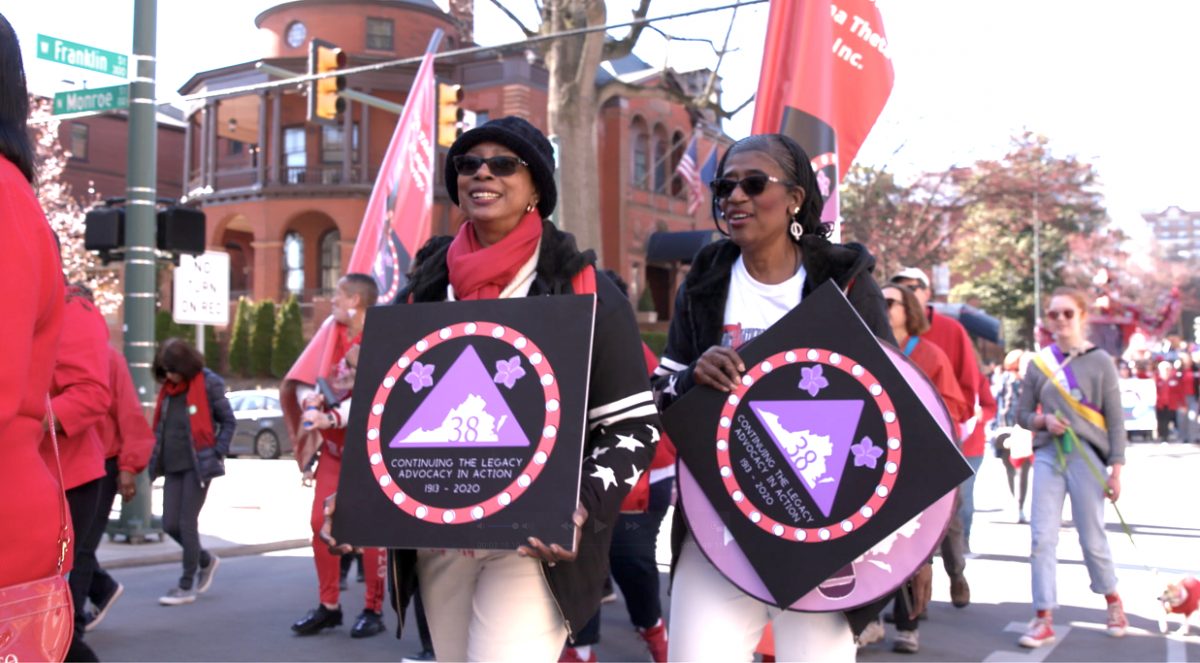The story of Virginia suffragists has gone untold – until now. In honor of the 100th year anniversary of the 19th Amendment, Boedeker Films presents These Things Can Be Done, a documentary that reveals what was really going on with our brave, suppressed ancestors.
Exactly one hundred years ago, Congress passed the 19th Amendment, granting women the right to vote after nearly a century of protest. Virginia was not one of the 36 states to ratify it.
“Then there’s the question, well, if they didn’t ratify it, then why even talk about it anyways? But I think looking at the reasons why they didn’t are really important,” said Laura McCann, writer and producer of These Things Can Be Done.
The documentary, produced by Boedeker Films in partnership with the Virginia Museum of History and Culture, offers a one-hour deep dive into Virginia voter politics and its relation to racial injustice at the turn of the century. The film premiered on Virginia Public Media on Thursday, August 13, and in addition to being available for streaming on their website, it is being rebroadcast several times over the next week on the VPM Plus network. It’s worth it for the 1910s fashion alone.

Boedeker Films is a nonfiction media house that creates interactive content for museums, as well as long form documentaries for companies like PBS and National Geographic. When McCann and Director Jeff Boedeker recognized the opportunity to make a film in time for the 19th Amendment’s anniversary, These Things Can Be Done became their first independent venture. McCann’s goal for the project was in line with the Boedeker Films approach, which is to create engaging, informative content. In other words, better than a high school history class.
“When I was in Virginia public schools, I was like, ‘History is so boring, I don’t even care about the dates of these battles of the civil war,’ you know? You just learn these sanitized facts without really understanding the power structures that are around them,” said McCann, who has a degree in American Studies. “When I happened to take a history class in college, I was like, ‘Oh my gosh, history is actually really interesting!’”
She’s particularly interested in 19th and 20th century American history, because, she said, “Everything about it has a direct impact on everything we experience now.” That’s what McCann and Boedeker hope to communicate with These Things Can Be Done, which features interviews with modern activists like Aurora Higgs, who are working to build on the suffragists’ accomplishments.

Unfortunately, the pandemic hit right when they were beginning to film reenactments, so the crew had to get creative when it came to showcasing the more historical content. The film does feature some small-scale reenactments, plus high-quality photo animations to help bring the story alive. Luckily, they had already completed all of their interviews pre-pandemic. They look really good.
As you might remember from Mrs. Banks’ jaunty song in Mary Poppins, suffragist efforts in the early 1900s involved women from all across the world and a variety of political climates. In the United States, Jim Crow laws ruled the South, making it close to impossible for Black people to vote.
“Culturally, Virginia is just different from the North,” said McCann. “You had to be in your place, you had to be more feminine, you couldn’t rock the boat too much.”
Women’s suffrage was a great triumph, but for southern states still wrestling with post-Confederate ideals and white-favoring policy, it’s an untold, messy history. For example, in Virginia, the Black community and the white community fought separate battles. The Equal Suffrage League of Virginia, an organization of white women (which, interestingly, met on West Franklin Street in the heart of Richmond), used white supremacy to their advantage. They argued to policymakers that Jim Crow laws would prevent Black women from voting, therefore increasing white representation.
“It was a heightened moment of white supremacy taking hold again in the south and enacting laws to maintain that control,” said McCann.

Black women fought more privately, having not been invited to join many of the suffrage movements. But even after the 19th Amendment, they faced major obstacles. “Maggie Walker actually played a big role in trying to get Black women the right to vote, and getting them registered, and helping them pay their poll taxes and helping do things like try to organize them so there weren’t long lines of Black women freaking out all the white people,” McCann said.
The Library of Virginia has an online exhibition called We Demand, where you can do some post-movie reading about their experiences with crowded basement voter registration halls.
These Things Can Be Done also highlights the ways in which the suffragist movement in Virginia was, despite its flaws, pretty magnificent. “They created a lot of lobbying methods, like the index cards they used to track legislatures — which is a really common lobbying tactic nowadays,” said McCann.
Likely as a result of women being able to quickly mobilize themselves into a lobbying force, the Equal Suffrage League evolved into the League of Women Voters, which still works to provide voter education and registration for Virginians. McCann also recalled that women fought for many of the child labor laws in the 30s and 40s.
For McCann, it was difficult to get everything that happened during the early 20th century fight for women’s suffrage in Virginia into one hour. “There’s so many interesting things that we didn’t have time to fit into an hour,” she said. “That was the hard part – what do we focus on here? What are the takeaways?”

Ultimately, she hopes modern viewers will be able to learn lessons from the struggles women’s suffrage advocates went through in the early 20th century, and apply them to the many battles for social justice that face Virginians today.
“Learning the pros and cons of how they addressed those structural barriers helps you understand how to organize for things that we need nowadays,” she said. What better way to reflect on these issues than from the comfort of your own couch?
Virginia Public Media will rebroadcast These Things Can Be Done on its VPM-Plus TV channel (57.1 over the air, 524 on Verizon Fios, 797 on Comcast) at 8 PM on Monday, August 17; 5 PM Tuesday, August 18; and at 10 PM on Friday, August 21. It’s also available for streaming right now at VPM’s website.
Photos via Laura McCann/Boedeker Films



